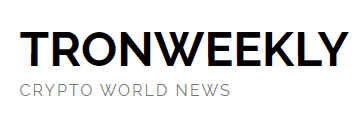You are here: Home / News / Is Ethereum (ETH) Losing Control? L2s Challenge Its Economic Model

February 11, 2025 by Mishal Ali
Key Takeaways:
- Ethereum’s economic model is under scrutiny as L2 networks keep most of the revenue while paying minimal fees to Ethereum.
- The Ethereum community is pushing the “ETH is money” narrative to compensate for revenue concerns.
- A major shift could happen if L2s start accepting stablecoins for gas fees, challenging ETH’s dominance.
Ethereum’s layer-2 (L2) ecosystem is facing intense scrutiny, with key players questioning whether these networks align with Ethereum’s long-term value. Chainlink’s Zach Rynes pointed out rising tensions, highlighting how L2s are being criticized for not being “ETH-aligned.”
This reasoning stems from a deeper economic issue—Ether relinquished its most lucrative revenue streams, i.e., MEV (Maximal Extractable Value) and congestion gas pricing, to L2s and retained lower-margin functions such as settlement and data availability.
This has led to a situation where L2 networks get to keep nearly all of the revenue they generate, with some paying Ether as little as 1% of revenue. The ETH community responded by doubling down on the “ETH is money” narrative to justify the current setup, the same strategy as Bitcoin.

Vitalik Buterin recently proposed that L2s rebate a portion of their fees back to Ether. However, his proposal relies on social pressure rather than a technical fix, and this has led to public debates between major L2 projects over which network is most “ETH-aligned.”
The Real Issue Behind Ethereum’s Economic Concerns
The core problem is not L2s failing Ethereum but rather Ether’s own decision to forfeit high-value revenue streams. L2s operate as independent businesses, optimizing for growth and profitability rather than acting as Ethereum’s financial support system.
Suggestions that these networks burn or reinvest ETH gains to enrich Ethereum’s economy overlook the economic incentives underlying L2 adoption. A bigger concern is that L2s will soon start accepting stablecoins like USDC as gas fees, challenging ETH’s position as the transaction token of choice.
While Ethereum purists might lament this step as being “not ETH-aligned,” the potential user experience improvements render it an unavoidable evolution.
If one major L2 adopts stablecoins for gas, others will do the same to remain competitive. Other L1 blockchains won’t adopt such a model, unlike Ether, because their success depends on making their native tokens useful.
A Path Toward Stability
Ethereum must act sooner to secure its economic foundation to address these growing concerns. Scaling L1 via higher gas limits and expanding blobspace may render Ether competitive. The other approach would be to prioritize native rollup development so that Ether’s base layer can regain control over MEV and gas pricing revenue.
Furthermore, the discussions on adding third-party rollups as native Ether features must begin, even if full implementation is discretionary. Such steps may help Ether return to financial sustainability without relying on social narratives.
Related Reading | Mysterious Bitcoin (BTC) Transaction: 14,000 BTC Moved After 10 Years!

 6 months ago
28
6 months ago
28




 English (US) ·
English (US) ·